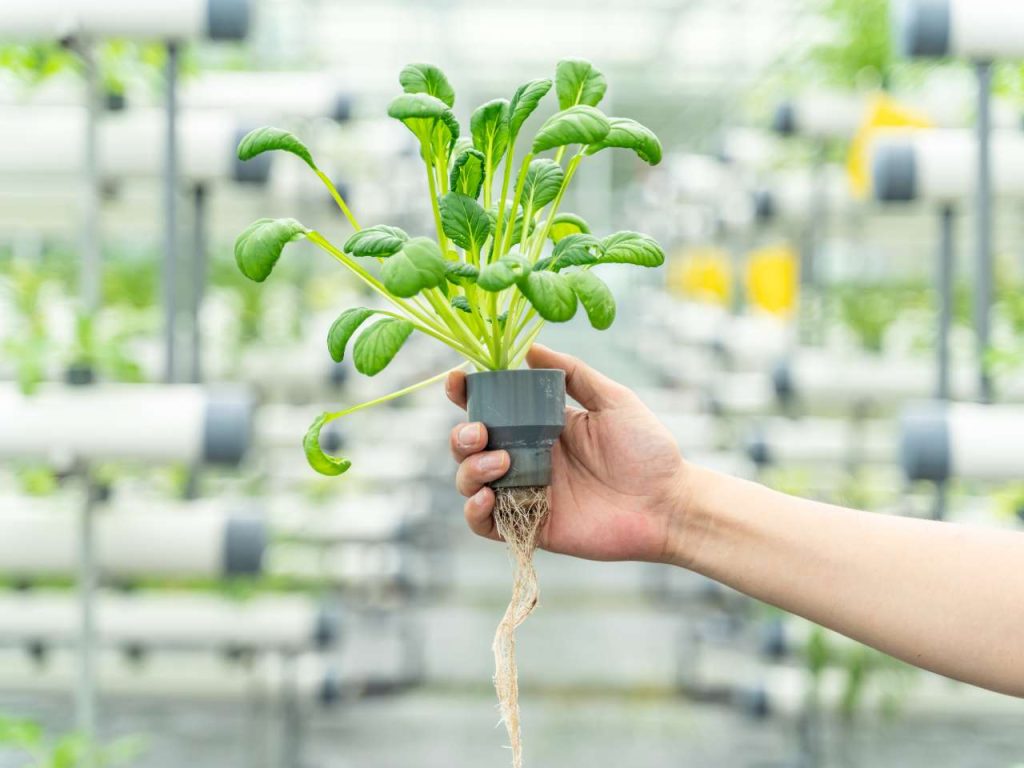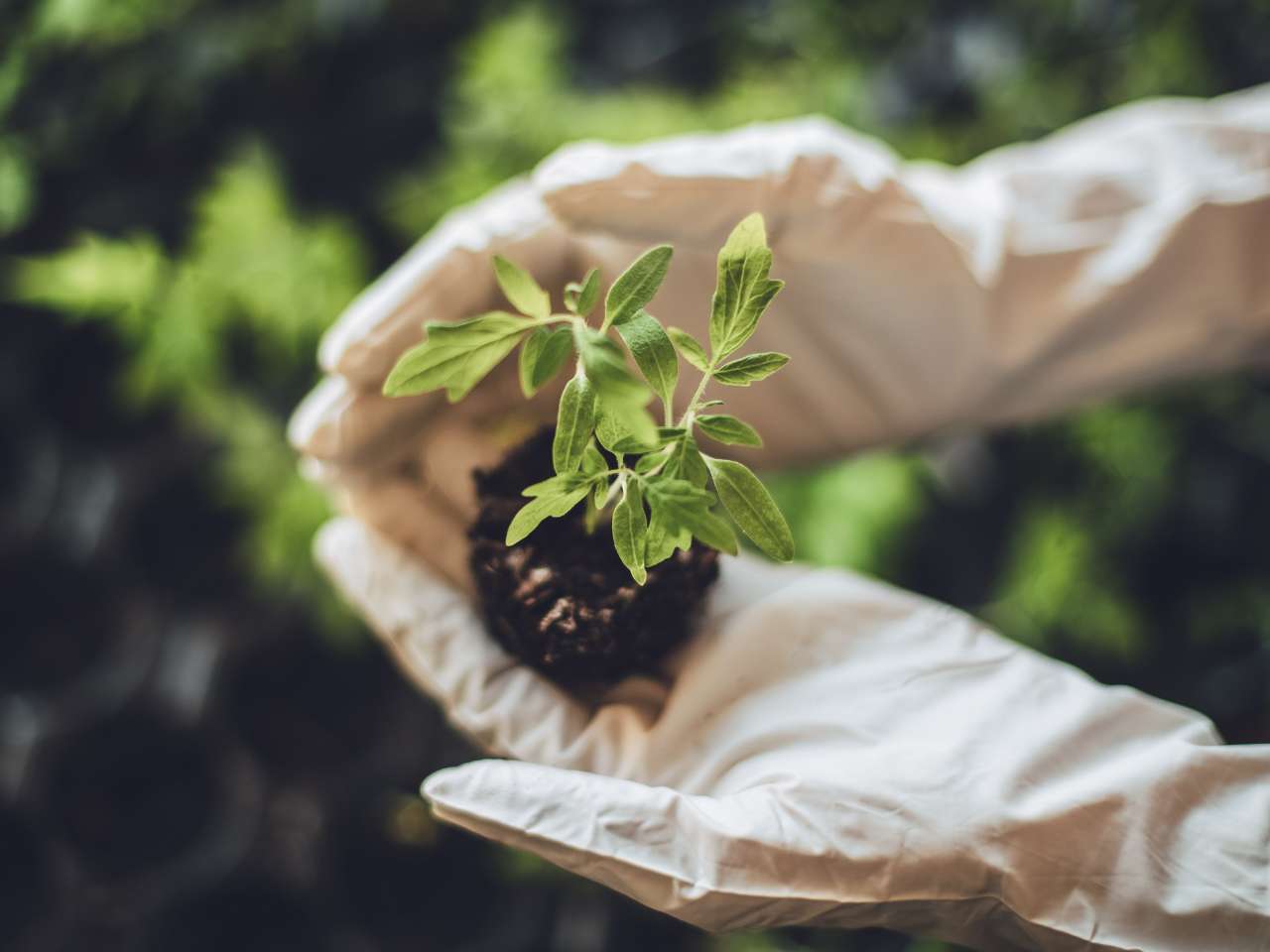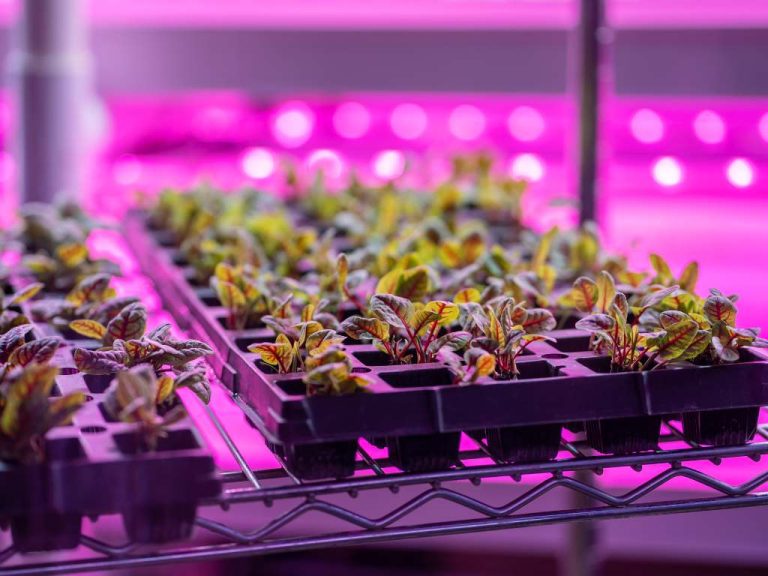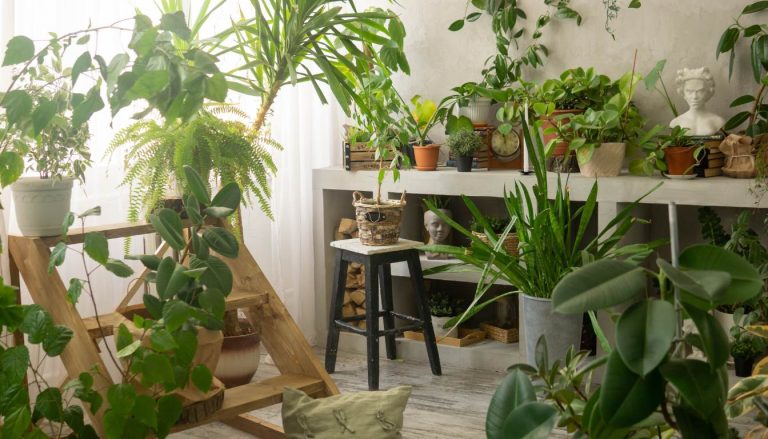Indoor Winter Vegetable Garden Ideas for a Fresh Harvest
Growing vegetables indoors during the winter is a fantastic way to ensure a fresh harvest all year round. Whether you have limited space, want to extend your growing season, or simply enjoy the convenience of having homegrown produce at your fingertips, indoor gardening is a great option. In this article, we will explore indoor winter vegetable garden ideas and provide valuable tips for successfully growing vegetables indoors.
Key Takeaways:
Microgreens for Quick and Nutritious Harvests
Indoor gardening enthusiasts looking for a fast and nutritious harvest should consider growing microgreens. These tiny vegetables are packed with flavor and can be harvested just 10 to 25 days after seeding, making them a perfect choice for those who want to enjoy fresh greens without the long wait.
Microgreens are densely seeded vegetables, herbs, or flowers that are harvested at the cotyledon or first true leaf stage. Popular options for microgreens include broccoli, arugula, lettuce, chard, radishes, cilantro, and basil. These greens are not only delicious but also rich in essential nutrients, making them a healthy addition to salads, sandwiches, and other dishes.
When growing microgreens indoors, it’s important to provide them with proper care. Use pots or trays filled with a high-quality potting mix or coconut coir and ensure regular watering to keep the soil moist. Adequate air circulation is crucial to prevent disease issues, so make sure to provide proper ventilation in your indoor gardening setup. With dedication and attention to detail, you’ll soon be enjoying a bountiful harvest of fresh and nutritious microgreens.
Explore Indoor Gardening Techniques
To make the most of your indoor garden and successfully grow microgreens, it’s essential to learn about various indoor gardening techniques. These techniques include using artificial lighting to supplement natural light, providing the right amount of water and nutrients for optimal growth, and ensuring proper air circulation to prevent mold or disease.
Read – Indoor Garden Layout Ideas
Investing in a grow light can make a significant difference in the success of your indoor garden, especially during the short, low-light days of winter. Gardening Under Lights by Leslie Halleck is a valuable resource for indoor gardening enthusiasts, providing insights on lighting requirements and techniques to maximize plant growth indoors.
Easy and Quick Sprouts for Indoor Gardens

Looking for a simple and quick way to grow your fresh produce indoors? Sprouts are the answer! With no special equipment or grow lights required, sprouts can be grown right on your kitchen counter. Organic sprouting seeds are recommended for the best results, and they can be sprouted in quart-sized jars with sprouting tops or on seed spouter trays.
To start the sprouting process, soak the seeds beforehand in a mixture of water and apple cider vinegar. This helps to disinfect them and promote healthy growth. Once soaked, simply drain the seeds and place them in the sprouting container of your choice. Keep the seeds moist by rinsing them with water every day, and watch as they quickly sprout and grow.
Within just a few days, your sprouts will be ready to harvest. Sprouts add a fresh and crunchy element to salads, sandwiches, and other dishes, and they are packed with nutrients. So why not give sprouting a try and enjoy the satisfaction of growing your healthy sprouts at home?
Get Started with Sprouting Tips
If you’re new to sprouting, here are some tips to help you get started:
- Choose high-quality organic sprouting seeds for the best results.
- Soak the seeds in a water and apple cider vinegar mixture to disinfect them.
- Use quart-sized jars with sprouting tops or seed spouter trays for easy sprouting.
- Rinse the sprouts with water daily to keep them moist and promote healthy growth.
- Harvest the sprouts when they reach the desired length, usually within a few days.
Growing Kale Indoors for Fresh Salad Greens
When it comes to indoor vegetable gardening, kale is a fantastic choice. Not only is it nutritious and packed with vitamins, but it’s also quite versatile in terms of how it can be grown. Whether you prefer kale as a sprout, microgreen, baby salad green, or full-sized plant, you can easily cultivate it in the comfort of your own home. Popular kale varieties for indoor growing include Red Russian and dinosaur kale.
If you’re looking to grow baby salad greens, simply sow the kale seeds in a tray or seeding flat filled with quality potting mix. Harvest the leaves when they are tender and add them to your favorite salads or sandwiches. For those who prefer full-sized kale plants, start the seeds in a pot with drainage holes and transplant the seedlings once they’re tall enough. Just remember to provide consistent watering, adequate lighting, and occasional fertilization to ensure optimal growth.
Kale is a resilient and low-maintenance vegetable, making it an ideal choice for indoor gardening. With the right care and attention, you can enjoy fresh and flavorful kale all year round, right from the convenience of your indoor garden.
Growing Kale Indoors: Tips for Success
When setting up your indoor vegetable garden for kale, there are a few key factors to consider. First and foremost, make sure you have a suitable container for your kale plants. A pot with drainage holes is essential to prevent waterlogged soil and root rot. Additionally, kale thrives in a well-draining potting mix, so be sure to use a high-quality soil blend specifically formulated for container gardening.
Lighting is another crucial aspect to consider when growing kale indoors. While kale can tolerate lower light conditions, it still requires a minimum of four to six hours of direct sunlight or artificial grow lights each day for optimal growth. If using grow lights, place them about 6-12 inches above the kale plants, adjusting the height as the plants grow.
Lastly, proper watering and fertilization are essential for healthy kale plants. Water consistently, allowing the soil to dry slightly between waterings. Avoid overwatering, as this can lead to root rot. As for fertilization, use a balanced, water-soluble fertilizer every few weeks according to the package instructions.
Other Vegetables Suitable for Indoor Winter Gardens

Winter Vegetable Garden Planning
While microgreens, sprouts, and kale are popular choices for indoor winter gardens, other vegetables can thrive in this setting. Root vegetables like onions, garlic, carrots, beets, and turnips can be grown indoors during the winter months.
These vegetables require larger containers and additional light to support their growth. Nightshades like bell peppers and tomatoes can also be grown indoors, but they need even more space and specialized care to ensure successful harvests.
Best Vegetables to Grow Indoors in Winter
When planning an indoor vegetable garden for winter, it’s important to choose the right vegetables that will thrive in this environment. Some of the best vegetables to grow indoors during the winter months include spinach, Swiss chard, radishes, and herbs like parsley and chives.
These vegetables can be grown in smaller containers and require less space and light compared to some of the other options mentioned earlier. They also have shorter growing seasons, making them ideal for indoor gardening.
Indoor Vegetable Garden Ideas
When it comes to creating an indoor vegetable garden, there are several ideas to consider. Vertical gardening is a great option for maximizing space and growing a variety of vegetables. Using hanging planters or wall-mounted shelves can help create a lush and vibrant indoor garden.
Another idea is to use a hydroponic system, which allows for soil-free cultivation and efficient use of resources. This method is especially useful for growing leafy greens and herbs indoors. Lastly, incorporating a variety of container sizes and types can add visual interest to your indoor garden.
Benefits of Indoor Winter Gardening
Indoor winter gardening brings a host of benefits that go beyond simply growing your fresh produce. One of the biggest advantages is the ability to have a fresh harvest all year round, regardless of the outdoor weather conditions. By cultivating vegetables, herbs, and sprouts indoors during the winter, you can enjoy a steady supply of flavorful and nutritious produce right at your fingertips.
Another significant benefit of indoor gardening is the reduction in grocery costs and the need for frequent trips to the grocery store. With your indoor garden, you can cut down on your grocery bills, save time, and have the satisfaction of knowing exactly where your food comes from. Plus, you’ll have access to a wider variety of crops that may not be readily available at your local market during the winter months.
Indoor gardening also helps to reduce food waste. With an indoor garden, you can harvest only the amount of produce you need at any given time, which helps to prevent excess food from spoiling. This reduces the amount of food that goes to waste, making your indoor garden an eco-friendly choice.
The Joy of Indoor Gardening
Beyond the practical benefits, indoor winter gardening can also be a rewarding and enjoyable hobby. It brings the beauty of nature indoors, adding a touch of greenery and life to your home environment.
The act of tending to your plants, watching them grow, and experiencing the joy of a successful harvest can be incredibly fulfilling. It provides a sense of accomplishment and a connection to the natural world, even during the coldest winter months.
So, whether you’re a seasoned gardener looking to extend your growing season or a beginner wanting to try your hand at indoor gardening, the benefits are clear. Indoor winter gardening offers fresh produce year-round, cost savings, reduced food waste, and the pleasure of nurturing plants in the comfort of your own home.
Essential Aspects for Successful Indoor Winter Gardening
Indoor winter gardening can be a rewarding and fulfilling experience, but it requires careful consideration of certain essential aspects. To ensure a successful indoor vegetable garden setup, here are some key factors to keep in mind:
Proper Lighting
One of the most critical aspects is providing adequate lighting for your indoor plants. Since winter days are shorter and sunlight may be limited, investing in grow lights is highly recommended. LED grow lights are energy-efficient and provide the necessary spectrum for plant growth. Position the lights at the appropriate distance from the plants to ensure they receive the required amount of light.
Watering and Humidity
Proper watering is crucial for indoor plants, as overwatering or underwatering can lead to issues like root rot or wilting. Ensure that your containers have drainage holes to prevent water from stagnating.
Monitor the moisture level of the soil and water only when the top inch feels dry to the touch. Additionally, maintaining humidity levels between 40-60% can help prevent dryness and keep your plants healthy.
Adequate Ventilation
Good air circulation is essential for preventing fungal diseases and promoting healthy growth. Place a small fan near your indoor garden to ensure proper ventilation. This will help prevent the buildup of stagnant air and reduce the risk of pests and diseases.
Step-by-Step Guide to Building an Indoor Garden for Winter
Are you ready to start your indoor garden for the winter season? Follow this step-by-step guide to set up a thriving indoor garden that will provide you with fresh produce all winter long.
Gather the Necessary Materials
To begin, gather all the materials you’ll need for your indoor garden setup. This includes pots or containers suitable for the plants you want to grow, potting mix, seeds or young plants, a watering can or sprayer, and any additional tools or accessories specific to your chosen plants.
Potting Up the Plants or Starting Seeds
Next, pot up your plants or start seeds according to the instructions for each specific plant. Ensure that each plant has enough space to grow and that the pots or containers have good drainage. For seed starting, use a high-quality seed starting mix and follow the recommended planting depth and spacing for each type of seed.
Provide Proper Watering and Care
The key to a successful indoor garden is consistent watering and care. Water your plants as needed, being careful not to overwater or let them dry out completely. Monitor the moisture level of the soil and adjust your watering schedule accordingly.
Additionally, provide adequate light for your plants, either through natural sunlight or artificial grow lights, and make sure to keep the temperature and humidity within the optimal range for your chosen plants.
Common Problems in Indoor Winter Gardening and Solutions
While indoor winter gardening can be a rewarding and convenient way to grow fresh produce year-round, it’s not without its challenges. Here are some common problems that indoor gardeners may encounter and the solutions to address them.
Maintaining Proper Drainage
A common issue in indoor gardening is root rot caused by excess moisture. To prevent this, it’s essential to ensure proper drainage in pots and containers. Use pots with drainage holes and add a layer of small stones or pebbles at the bottom to improve drainage. Additionally, avoid overwatering and allow the soil to dry out slightly between waterings.
Addressing Nutrient Deficiency
Indoor plants rely on the nutrients provided by the potting mix, which can deplete over time. To address nutrient deficiency, regularly fertilize your indoor plants with a balanced indoor plant fertilizer.
Follow the instructions on the fertilizer package for the appropriate dosage and frequency of application. Additionally, consider supplementing with organic amendments such as compost or worm castings to enrich the soil.
Managing Lighting Conditions
Insufficient or improper lighting can lead to issues like leaf burn, wilting, or stunted growth. Indoor plants require adequate light for photosynthesis. Place your plants near a window that receives bright, indirect light, or use artificial grow lights to supplement natural light.
Adjust the distance between the plants and the light source to ensure they receive the appropriate amount of light. Avoid placing them too close to hot or cold drafts that can stress the plants.
Maintaining Proper Humidity Levels
Indoor environments can be dry, especially during the winter months when central heating is used. Low humidity can cause leaves to curl, brown, or become crispy. Increase humidity levels by placing a tray filled with water near the plants or using a humidifier.
Misting the leaves with water can also help raise humidity temporarily. Monitor the humidity levels and adjust as needed to maintain a healthy growing environment for your indoor garden.
Enjoy Year-Round Indoor Gardening
Indoor gardening allows you to enjoy the pleasures of gardening all year round, even during the winter months. With proper planning and care, you can have a thriving indoor garden that brings joy and satisfaction. The convenience of having fresh produce at your fingertips is truly rewarding.
Maintaining an indoor garden requires regular maintenance. Proper watering is crucial to the health of your plants. Be mindful of their specific watering needs and ensure they receive adequate moisture. Additionally, fertilizing your plants regularly will provide them with the nutrients they need to thrive.
Pest control is another important aspect of indoor garden maintenance. Monitor your plants for any signs of pests and take appropriate measures to prevent infestations. This could include using natural pest control methods or introducing beneficial insects to keep pests at bay.
FAQ
What are some indoor winter vegetable garden ideas?
Some indoor winter vegetable garden ideas include growing microgreens, sprouts, kale, and other vegetables like root vegetables and nightshades.
How do I grow microgreens indoors?
Microgreens can be grown indoors by densely seeding them in trays or pots filled with potting mix or coconut coir. Adequate lighting, regular watering, and proper air circulation are essential for successful growth.
What are sprouts and how do I grow them?
Sprouts are quick-growing vegetables that can be grown indoors without any special equipment or grow lights. They can be grown in jars with sprouting tops or on sprouting trays. Soaking the seeds beforehand helps with disinfection, and they can be harvested in just a few days.
Can kale be grown indoors during winter?
Yes, kale can be grown indoors during winter. It can be grown as a sprout, microgreen, baby salad green, or full-sized plant. Red Russian and dinosaur kale are popular varieties for indoor growing.
What other vegetables can be grown indoors during winter?
Other vegetables that can be successfully grown indoors during winter include root vegetables like onions, garlic, carrots, beets, and turnips, as well as nightshades like bell peppers and tomatoes.
What are the benefits of indoor winter gardening?
Indoor winter gardening allows for fresh produce all year round, reduces grocery costs and trips to the store, and provides flavorful and nutritious produce. It also helps in reducing food waste and can be a rewarding hobby.
What aspects should I consider for successful indoor winter gardening?
To have a successful indoor winter garden, consider having the necessary seeds or potted plants, proper containers, sufficient lighting, appropriate potting mix, watering and misting equipment, a heating pad for seed starting, a hand shovel, and gloves. Planning the layout and placement of the plants is also important.
How do I build an indoor garden for winter?
Building an indoor garden for winter involves having a plan in mind, gathering all the necessary materials, potting up the plants or starting seeds, providing proper watering and care, and making any necessary adjustments along the way.
What are common problems in indoor winter gardening and how do I solve them?
Common problems in indoor winter gardening include root rot, nutrient deficiency, leaf burn or wilting, leaf curl, and browning leaves. These problems can be solved by ensuring proper drainage, providing sufficient nutrients, adjusting lighting conditions, maintaining humidity levels, and monitoring watering practices.
How do I maintain an indoor garden year-round?
Regular maintenance, including proper watering, fertilizing, and pest control, is necessary to ensure the continued success of an indoor garden. Harvesting fresh produce brings joy and satisfaction while providing a convenient source of flavorful and nutritious food.
- 15 Ingenious Kitchen Garden Ideas to Cultivate Freshness Right at Home - April 7, 2024
- 10 Top Picks Best Plants for Open Terrarium - April 2, 2024
- 21 Easy and Cheap Walkway Ideas for a Charming Garden - March 31, 2024








